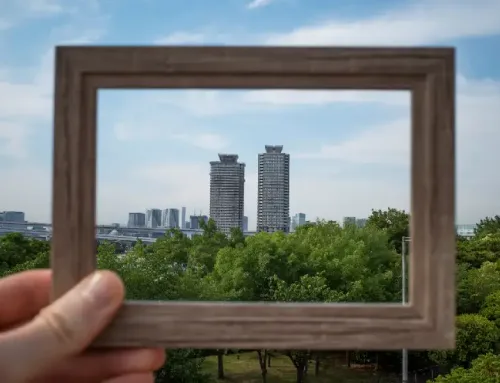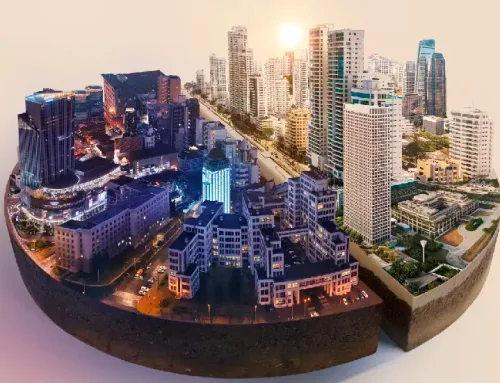In Abu Dhabi, labour camps are a significant testament to the nation’s rapid growth. These are places where thousands find refuge after a hard day’s work, making it all the more essential to ensure their well-being. Imagine building massive skyscrapers, roads, and infrastructures, only to retire to a place that doesn’t prioritize your health or safety. This article dives deep into the importance of health and safety within these workers’ accommodation in Abu Dhabi, emphasizing the need for worker welfare. Stick around because we’re not just discussing problems – we’re looking at solutions, history, and future possibilities!
Historical Context of Labour Camps in Abu Dhabi
Delving into the historical context of labour camps in the UAE, we uncover a fascinating narrative. These camps have evolved alongside Abu Dhabi’s remarkable economic growth, driven by a continuously expanding labour force. As the emirate thrived and its workforce multiplied, the pressing need for suitable accommodations became apparent. However, these camps didn’t quite meet the mark in the early days. They often featured cramped spaces, limited amenities, and a shortfall in essential services, painting a less-than-ideal picture for the hardworking individuals who called them home. The journey from those humble beginnings to the present reflects not only infrastructural progress but also a growing recognition of the importance of worker welfare in this dynamic landscape.
Current State of Labour Camps in Abu Dhabi
As the skyline of Abu Dhabi began to rise and reshape, casting long shadows across the desert, the labour camps in the UAE underwent their own evolution. Initially established as basic shelters, these camps were the city’s response to a sudden surge of workers, all of whom arrived with dreams tethered to the promise of this burgeoning metropolis. The 1980s and 1990s, in particular, witnessed a dramatic uptick in the city’s labour demands as iconic infrastructural projects got underway. This rapid expansion emphasized the growth of the labour force and highlighted the diverse tapestry of nationalities it comprised – from South Asian to African to other Middle Eastern nations. However, the early conditions in these labour camps left much to be desired. Many workers grappled with cramped quarters, limited amenities, and adjusting to a new, foreign environment. While the tales from those times were imbued with resilience and hope, they also spoke of homesickness, the harsh desert climate, and cultural adjustments. Yet, as Abu Dhabi moved forward, so did its recognition and efforts to ease the living conditions of its backbone – the workers. With time, policies were reformed, facilities improved, and a more holistic approach to worker welfare began to take root.
Legislation and Regulations
In Abu Dhabi, the health and safety regulations set for labour camps encapsulate a broad vision of worker welfare. They mandate ample living space to prevent overcrowding, ensure the constant availability of clean drinking water, and require that sanitation facilities maintain a set ratio for toilets and showers per resident. A broader health perspective mandates on-site first aid amenities and, in larger camps, fully-staffed medical clinics. Moreover, these regulations demand fire-resistant camp structures with necessary fire safety tools and clear emergency protocols. Ensuring these guidelines are more than just words, the Abu Dhabi government actively enforces them through rigorous inspections, often imposing severe consequences for non-compliance, ranging from fines to operational halts. Augmenting this governmental vigilance, NGOs and worker welfare bodies play a pivotal role in overseeing and reporting discrepancies and educating workers about their rights. This holistic approach, integrating stringent regulations with active enforcement, underscores Abu Dhabi’s unwavering commitment to the heartbeat of its growth – the workers.
Health and Safety Measures for Workers
Amid Abu Dhabi’s construction sites, with workers busy with their tasks, there’s an unwavering commitment to keeping everyone safe. Occupational health and safety practices aren’t just about ticking boxes; they’re about ensuring every worker goes home in good health. That means helmets aren’t just accessories; they’re vital. It also means those regular breaks, especially during the sweltering midday heat, aren’t luxuries but necessities. Off the site, the emphasis on health continues. Regular medical check-ups aren’t just appointments on a calendar; they’re opportunities to catch any health concern early, ensuring everyone stays fit for the long run. And access to healthcare? It’s not a privilege; it’s a given. Everyone deserves the best care, whether dealing with a minor cough or something more serious. And, life being unpredictable as it is, having top-notch emergency response procedures and facilities on standby is crucial. It’s not about expecting the worst but about being prepared for it. Because at the end of the day, it’s not just about building structures but about valuing and taking care of the people who build them.
Initiatives and Programs for Worker Welfare
In the backdrop of Abu Dhabi’s iconic structures and rapid urbanization are initiatives genuinely aimed at uplifting workers’ lives, proving that progress isn’t just about towering buildings but building stronger communities, too. One example is the “Saadiyat Accommodation Village”, which goes beyond providing just shelter; it offers a holistic environment with recreational zones, educational centres, and medical facilities. The improvements we see in worker welfare are not standalone efforts. They stem from a collective commitment where the government sets the framework, employers prioritize the well-being of their teams, and NGOs contribute with on-the-ground knowledge and advocacy. This united approach ensures that initiatives are launched and effectively make a difference in the daily lives of workers. Together, they’ve orchestrated programs that aren’t just beneficial on paper but transform lives on the ground. There are stories of workers picking up new skills, reconnecting with distant family members through improved communication facilities, or simply finding a moment of joy in community gardens. These tales highlight that with a unified effort, the journey towards better worker welfare isn’t just a goal; it’s a reality being lived every day.
Challenges and Future Directions
While strides have been made for worker welfare in Abu Dhabi, the path forward still holds its fair share of hurdles. Lingering issues such as adapting to cultural nuances, language barriers, or managing the harsh climatic realities continue to impact daily living in labour camps. These challenges underscore the need for systemic changes and a more nuanced understanding of individual experiences. Looking ahead, there’s room for innovative solutions: think technology-driven health monitoring or educational programs that bridge cultural divides. But these enhancements need a collective push. The government could spearhead more holistic policies, encompassing everything from psychological support to improved recreational facilities. Employers, on their part, might look towards fostering more inclusive community environments while staying vigilant against exploitation. And the workers? Their voice is crucial. Encouraging open forums where they can express concerns, share experiences, and contribute ideas can inspire new initiatives. After all, in the quest to elevate worker welfare, every insight, big or small, paves the way for a future where prosperity is shared and well-being is universal.
In wrapping up, the labour camps in the UAE, specifically in Abu Dhabi, stand as a testament to the city’s growth and reliance on a global workforce. The importance of health and safety within these camps cannot be understated. Continuous improvements in worker welfare are essential, not just as a moral duty but as a cornerstone of Abu Dhabi’s continued prosperity. Here’s a heartfelt call to action for all stakeholders: Let’s prioritize the well-being of those helping build this magnificent city.





